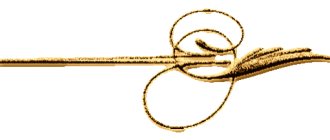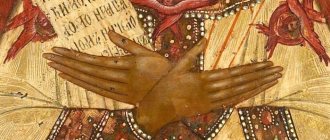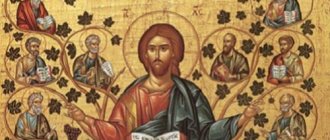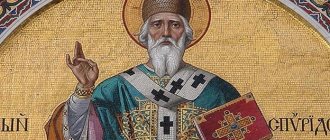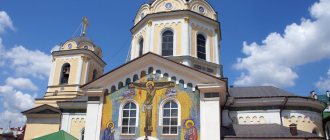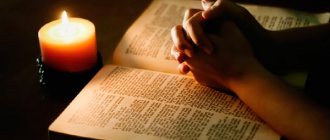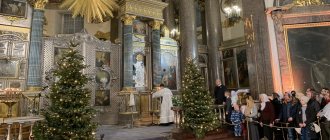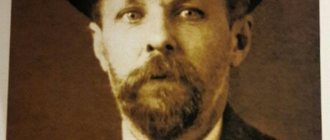The Tree of Life is part of world culture
The topic of immortality has long been of interest to humanity.
Both those in power - kings, emperors, and ordinary people - were passionate about the search for the elixir of eternal life. The symbol that personifies immortality in most religious teachings of the world and cultural civilizations is the tree of life. It embodies strength and longevity. The meaning of the tree of life in religions and culture of the world
This concept can be found in the culture of many peoples and religious monuments of the most common beliefs.
Jewish Kabbalah
In Kabbalah, the world is presented as a composition of ten emanations or manifestations of the Supreme Mind. This composition is the tree of life, also called sephiroth or sefirot. It represents elements - sephira, which have Hebrew names and have magical potential. They are connected to each other by a line of “zivug”, which means “mating”. The Sephira also express the names of the planets of the solar system. The highest point - Kether - personifies God. Divine light passes through it, and with each element passed through, its energy weakens. The Divine radiation reaches its lowest point, Malkuth, having diminished many times over. The lower element of the sephirot is Earth.
The Tree of Life, according to Kabbalah, is the expression of a person who has reached the highest state of mind. In the composition of the tree, three main components can be identified, called pillars. The left side is the pillar of rigor, the center is the pillar of balance, and the right side represents mercy. All sephiras express human states at different levels of spiritual development. As a person's soul grows, it passes through all the stages or elements of the tree, and in the sephira of Binah reaches Paradise. And the highest point is available only with complete purification or “correction” of the world.
Bible
The tree of life is also mentioned in biblical stories. They say that God expelled the first people from Paradise, thereby depriving them of this wonderful symbol of wisdom. The tree is mentioned in the Apocalypse and other texts of the Old Testament monuments. In Christianity, this symbol was depicted hung with fruits and guarded by the Serpent, Dragon or Lion.
In other cultures
Also, the tree that bestows immortality is spoken of in many ancient legends, for example in the Hittite memorial text about Gilgamesh, and in Egyptian images. Among different peoples it is represented by different types of earthly trees. Thus, among the Germans the tree of life is the yew, among the peoples who practice shamanism it is the birch.
Commemorative specimens with the tree of life
There are several monuments of world culture that depict this symbol of immortality. For example, the “Tree of Life” icon, which depicts Jesus Christ surrounded by a grape vine. Therefore, this icon also has the name “Christ the Vine” or “Christ the Vine of Truth.” Around him are the apostles and, in some examples, also John the Baptist and the Holy Mother of God. This image is based on the stories of the Gospel.
There is another interpretation of the sacred text, which depicts the Holy Sepulcher, from which a vine with bunches of grapes grows. From the grapes Christ squeezes wine (which expresses wisdom and sacrifice) into a vessel.
The Germans preserved beautiful tapestries with the tree of life depicted on them, which were hung on the facades of fortresses and gates. They were also used as flags on campaigns.
Interesting Facts
Not far from the Persian city of Bahrain, a mesquite tree has been growing right in the desert for 400 years. Local residents call it the tree of life, as it grows in the sun-scorched sands, despite the lack of water. This phenomenon attracts many tourists from all over the world.
It is interesting that this symbol of immortality is used very often in our lives. For example, the philosophy of attracting wealth and abundance is common. Practitioners of this system grow money tree (crassula) at home. Various jewelry is also made that imitates this element, for example, beaded pendants. There are meditation techniques called “Money Tree of Life” that promote well-being.
This symbol has existed since time immemorial and continues to find its new meaning in the modern world. Even in the scientific world this concept is quite relevant. After all, the tree that gives eternal life personifies the genealogical structure of man, his evolution. Further study of this element can reveal new secrets of the universe to people.
fb.ru
In our temple there is an icon of the Savior Tree of Life. Imported from Greece
Savior the Tree of Life or, as this icon is much more often called, Savior the True Vine, is a Greek icon, widely known in the Greek tradition, but extremely rare in Russia. Russian icon painting workshops almost never use this subject, although, of course, they are familiar with it. This is one of the most symbolically rich images of the iconography of Christ. The Savior Himself is depicted in such an icon in the center, in the image of Pantocrator - Jesus Pantocrator, Almighty Judge and King of Heaven, Ruler of the world. That is, the image of Jesus himself fully corresponds to one of the six main canonical iconographic types generally accepted in the Orthodox tradition. However, unlike the usual image of the Almighty, here He is represented as a tree trunk, on the branches of which there are medallions with images of the apostles of His Church. The symbolism of the images of this icon goes back to the words from the Gospel of John: “I am the true vine, and My Father is the vinedresser. Every branch of Me that does not bear fruit He cuts off; and every one that bears fruit he cleanses, that it may bear more fruit. You have already been cleansed through the word that I preached to you. Abide in Me, and I in you. Just as a branch cannot bear fruit by itself unless it is in the vine, so neither can you unless you are in Me. I am the vine, and you are the branches; He who abides in Me, and I in him, bears much fruit; for without Me you can do nothing. Whoever does not abide in Me will be cast out like a branch and wither; and such [branches] are gathered and thrown into the fire, and they are burned” (John 15: 1-6). Images of the apostles, disciples of Christ, whom He sent around the world to preach and spread the Christian faith, are traditionally symbolic. The Supreme Apostle Peter is always depicted with a bunch of keys - these are the keys to the Kingdom of Heaven, that is, the totality of the Church Sacraments (the image symbolized by the keys). The Evangelists Mark, Luke, Matthew and John are depicted with the books of the Gospels, and the Apostle John can always be distinguished from the others by at least the mountainous background outlined behind him - in memory of his work on the Gospel on the rocky island of Patmos. The Icon of the True Vine (Grape Vine) has been known in Greece since the 15th century; it first appeared in Greek monasteries. However, initially around Christ it depicted not only the apostles, but also the Mother of God and John the Baptist, acting as defenders of people in the face of a strict Judge. In this form, the icon was a little reminiscent of the Deesis rite, which is the central part of the Orthodox iconostasis. At a later time, in the 17th century, another version of the image of the True Vine appears - the icon also depicts the Holy Sepulcher, from which the vine grows, or they vary the image of Christ - He holds the vine in his hands, or it grows from His pierced rib, and He Himself squeezes a bunch of grapes into a chalice - a cup used during Christian worship to consecrate wine. Thus, in later versions of the icon the Eucharistic content of the plot is strengthened as opposed to the more ancient allegorical one. However, the more ancient iconographic version remains much more widespread today. In general, the symbolism of the vine is very widely represented in the Bible, and in the decoration of Christian churches, and, of course, during worship. Grapes are a symbol of wisdom, immortality, and at the same time – blood, sacrifice. A well-groomed vineyard is a symbol of peace and prosperity. Floral ornaments are widely used to decorate churches, in frames and carved crowns of icons, on internal frescoes and external paintings of churches, on carved bases of iconostases, platbands and tiles. The symbol of the Last Judgment at the end of time is the harvest of grapes. The image of the Flourishing Cross, which came to Rus' from Byzantium, is also determined by the symbolism of the vine - two flowering branches emanate from the base of the cross as a sign of the Resurrection, hence it is called the Life-Giving Cross of the Lord. And if the Russian version of the Life-Giving Cross uses a floral ornament, then the Greek version uses a vine with leaves and clusters. There is also a known legend connecting the Cross of the Lord with the heavenly Tree of Life. According to this legend, a tree that once grew on Adam’s grave from a wreath buried with him was used for the crucifixion of Christ. Adam wove this wreath from branches brought by his third son Seth from paradise, branches of the Tree of Life. During the time of King Solomon, it was predicted that the Messiah would be executed on the trunk of this tree, and Solomon ordered the trunk to be drowned. However, for the crucifixion of Christ, the trunk of the Tree, drowned by Solomon, was taken from the font of Siloam (the source from which, according to the Gospel of John, Christ healed the blind), and it was from this that the Cross was made. When it became known about the Resurrection of Christ, the cross, being frightened, was hidden and buried. In the 4th century St. Helen - the mother of the first Christian emperor, Constantine the Great Equal to the Apostles - undertook an investigation and discovered the place where the Cross was buried. However, it turned out that the crosses of the thieves crucified with Him were also buried along with the Cross of the Lord. Nevertheless, the Cross of the Lord was immediately distinguishable by the living grapevine sprouting from it. The Icon of the True Savior Vine depicts not only the Savior himself, but also His entire Church. According to Jesus himself, He is the trunk, and people are His branches. The Church is a living, changing and developing organism, growing like a tree or a vine, the center and foundation of which is Christ, but the branches, shoots and even the smallest leaves are individual people, believers, the new people of God, becoming one family. Speaking about Himself as the True Vine, Christ makes the disciples, the apostles - and through them the entire Church, each of its members - participants in His life. The Church does not just gather around Christ - it unites with Him. constitutes His Body. And although each individual person in this organism retains his individuality and freedom, through love he is included in the unity of the Mystical Body. Through the sacraments, believers, members of the Church, are united with Christ. Therefore, the central, main sacrament of the Church is the Eucharist, communion of Body and Blood, bread and wine - the basis of the liturgy. And the icon of the True Savior Vine also reminds us of this. Clement of Alexandria, the founder of the Alexandrian theological school, who lived at the end of the 2nd century, missionary and Christian apologist, writes: “The grapes give wine, as the Word gave His blood.” For members of the Church, the vine and bunches of ripe grapes are a symbol of paradise, a symbol of the coming Kingdom of God.
“Icon of the Mother of God “Tree of the Blessed Virgin Mary”
Quote from LYUBOYAR's message
“Icon of the Mother of God “Tree of the Blessed Virgin Mary”
“Icon of the Mother of God “Tree of the Blessed Virgin Mary”
“The Icon of the Mother of God “Tree of the Most Holy Theotokos” depicts 16 main miraculous icons (images) of the Most Holy Theotokos with the Infant Jesus Christ, located on a branchy tree. In the center of the tree is the Bethlehem Cave and the Mother of God with the Baby Jesus reclining in a manger. This Nativity of the Lord gave rise to the depiction of the Ever-Virgin Mary as the Mother of God. That is why the Nativity icon is placed on the trunk of a symbolic tree and is highlighted in a larger size compared to other icons. Under the Nativity icon on the trunk is depicted the “Sweet Kiss” icon, symbolizing the wondrous love and continuous connection between the Mother of God and the Son of God Jesus Christ. On the left and right along the branches of the tree there are 7 famous miraculous icons of the Most Holy Theotokos with the Child of God. The meaning of this icon is that it reflects the connection of all the icons of the Mother of God, like branches of one tree that grew in the sacrament of the Nativity of the God-Man Jesus Christ in Bethlehem. You can pray in front of this icon to the Blessed Virgin and the Infant God. Since this icon is composite, i.e. consists of images of 16 icons of the Mother of God, then praying to her as one image is not suitable. You can pray to each icon depicted, or simply to the Mother of God Herself.
Prayers before the icon of the Tree of the Virgin Mary
Prayer 1
My queen, my home, my hope, Mother of God, friend of orphans and foreigner of the Commissioner, sorrowful Joy, offended by the Patroness! See my trouble, see my pain, help me as if I were weak, feed me as if it were strange. My pain weighs, solve it as if you wanted: as if it were not the imam of any other help except You, not for another Representative, not for a good Comforter, only for You or the Mother of God, as if you saved me and covered me me forever. Amen.
Prayer 2
O Most Holy Virgin, Mother of the Most High Lord, Intercessor and Protection of all who come to You! Look from your holy height at me, a sinner (name), falling in your purest image; hear my warm prayer and bring it to your beloved Son, our Lord Jesus Christ; pray that he will enlighten my dark soul with the light of his divine grace, may he deliver me from all want, pain and illness, may he send me a quiet and peaceful life, physical and mental health, may he pacify my aching heart and heal its wounds, may he will guide me in good deeds, my mind must cleanse me from vain thoughts, teach me to fulfill his commandments and save me from eternal torment, and not deprive me of His Kingdom of Heaven. O Most Holy Theotokos! You, “Joy of all who mourn,” listen to me, the mourner; You, called Pain Satisfaction, soothe my pain; You, “Burning Kupino”, save the world and all of us from the harmful fiery arrows of the enemy; You, “seekers of the lost,” do not allow me to perish in the abyss of my sins. Bose is my hope and hope. Awaken me in temporary life, an intercessor, and for eternal life before Your beloved Son, our Lord Jesus Christ, an intercessor. Teach me to serve You with faith and love, and You, Most Holy Theotokos, Most Holy Mary, honor me reverently until the end of my days. Amen.
History of appearance
Iconography has a difficult fate - in the first centuries after its appearance, Christianity was not numerous, it was considered an incomprehensible sect, which was despised by both Jews and Romans. Christians had to hide, they were persecuted by emperors - they were thrown to lions, stoned, their heads were cut off for refusing to make sacrifices to the pagan gods. For the Romans, this was tantamount to refusing to serve Caesar.
Therefore, at first, images of Christ and saints were very rare and were preserved mainly only in the catacombs. Most often, they were also symbolic - the church canon was just being formed at that time, many objected to trying to express with drawings what is inaccessible to human understanding. After all, Christ is God, and Christians are just people. Instead of Jesus, they painted a shepherd or a fish.
Icons began to appear on wooden boards from the 3rd century. - this period is considered the beginning of icon painting as an art. Then in the 8th century. a period of iconoclasm began, during which they were mercilessly destroyed. 60 years later, the Council of Nicaea officially established the veneration of holy images. All these years, Christians carefully collected and preserved icons of Christ and the Mother of God.
The semantic load of the image of the world tree
The tree of life is firmly rooted in different cultures; it symbolizes the structure of the universe. The roots are the Navi world (the underworld), the trunk is the waking world (the real world), and the crown symbolizes the government - the world of the gods. Using the world tree growing on the Alatyr stone, located on the island of Buyan, many heroes of folklore travel through the worlds in search of their truth. After all, a tree is an axis that connects all worlds into one.
We advise you to study What does ecumenism mean?
Another meaning is the connection of times: the past is the roots, the present is the trunk, the future is the crown.
The image of the world tree is also a symbol of the clan, ancestral memory, where the roots are our parents (and all past generations), the trunk is ourselves, and the branches and leaves represent our descendants (children, grandchildren, great-grandchildren).
It is believed that the more powerful the family connection (roots), the stronger the crown (children and grandchildren), it is not for nothing that the history of the family is studied when compiling a family tree.
Legends and myths of different nations
In Slavic folklore, the tree often plays a dominant role; its image is associated with immortality.
In biblical mythology, the Tree of Life, created by God in Paradise, personifies the axis of the world and the principle of the universe. The base symbolizes the earthly component, the branches reach to heaven, the roots go to the underworld. Our ancestors perceived it as a connection with the Family, an interaction of times. The trunk is the existing generation, themselves. Roots going into the ground - the past associated with the ancestors. Crown - descendants who will live in the future. In Armenian culture, the tree was considered the personification of eternity and a religious symbol. The image was a trunk with branches extending symmetrically to the sides. One leaf grew on each of them. Similar signs were placed on fortress walls and warriors’ shields. The Assyrians imagined the tree of life in the form of various knots and crossed lines. It is assumed that it was a religious sign associated with the eagle-headed Gods. Used in rituals of priests to communicate with higher powers. These are just assumptions - scientists have not come to a consensus on this issue, and there is no evidence confirming this. According to ancient Egyptian legends, Iusat is a connecting symbol of two worlds. The sacred sycamore tree stands on the threshold of life and death. Among the peoples of Scandinavia, ash gave secret runic knowledge to God Odin. Persian legends tell of a tree from which all the seeds grow, giving new life. Archaeological finds in China have led to the conclusion that the symbol of immortality, the phoenix, and the tree are inextricably linked. According to legend, a peach fruit ripens on it once every millennium, and whoever tastes it gains eternity. In the esoteric teachings of Kabbalah, the Tree of Life is represented by a set of sefirot that form the kingdom of manifestation of God. The Celts and Aztecs had similar legends, according to which there is a tree that is the center of the world.
The meaning of the face
The main idea of this image is that the Virgin Mary is the one and only Mother of Christ, but her personality is multifaceted and each of them is represented separately in different images by icon painters. Her entire personality is like a large tree, the branches of which are connected by a single trunk - the Birth of Christ in Bethlehem. Each image is the fruit of a given tree.
The icon appeared at the beginning of the 21st century during a period of serious economic crisis in the country and therefore it is especially important and has deep meaning for an Orthodox person. At a time when people are losing their jobs, money, the world is being shaken by wars and natural disasters, the Lord is still close to people. He also calls them to Himself and helps them. The Church is still waiting for people to come and worship their Lord.
Important! This board is designed to remind people that they are all brothers, that they should help each other in difficult moments of life. The main idea of the board is that all life is from the Lord. Everything was created through Him and by Him, therefore forgetting about Him is tantamount to blasphemy.
He does not tolerate such an attitude towards Himself, as it is written in Scripture
Everything was created through Him and by Him, therefore forgetting about Him is tantamount to blasphemy. He does not tolerate such an attitude towards Himself, as it is written in Scripture
The main idea of the board is that all life is from the Lord. Everything was created through Him and by Him, therefore forgetting about Him is tantamount to blasphemy. He does not tolerate such an attitude towards Himself, as it is written in Scripture.
Since the board represents several completely different Mothers of God, each of which is prayed to by completely different people, its meaning is to unite all of them together.
In what cases do you turn to the image?
In every complex and difficult worldly life situation, the sacred face of Jesus Christ will come to the rescue, namely:
- To gain strength;
- To strengthen the Spirit, Faith in the Lord Jesus Christ;
- To protect the family hearth from quarrels and troubles;
- To protect children from acts that are not pleasing to God;
- For intercession from enemies, attackers, ill-wishers;
- For consolation in sorrows and sorrows;
- For patients with serious illnesses;
- They ask for help in healing the soul and body;
- Upon repentance and upon receiving instructions on the true path.
What types of icons of the Mother of God are there?
Church historians Nicephorus Callistus and monk Epiphanius have preserved for us information about the traditional writing of the image of the Virgin Mary. The Virgin Mary certainly wears a purple maforium (a married woman's veil that covers her head and shoulders) and a blue tunic (long dress). Maforia is decorated with three stars on the head and shoulders.
The most common type of image of the Virgin Mary is Oranta. In the image, the Mother of God stands at full height with her arms outstretched to the side, with her palms turned outward. This gesture symbolizes intercessory prayer.
Such icons include, for example, the famous in Russia icon of the Most Pure Virgin “The Inexhaustible Chalice”, in front of which they pray for deliverance from drunkenness. We will talk in detail below about in what cases and in front of which icon believers pray for their needs.
Vladimir Icon of the Mother of God
The iconographic type of Eleus (Tenderness) was most popular in the subjects of Old Russian icon painting. Here the Virgin Mary is represented with the baby Jesus in her arms and pressed against Her cheek. The most famous Russian icons, such as “Vladimir” or “Pochaev” are the most striking examples of this type.
Among the icons of Hodegetria, a characteristic feature is the Most Pure Virgin with the Child Christ, whose right hand is clasped in a blessing gesture with two fingers, and a scroll or book is held in the left. For example, the “Kazan” icon of the Mother of God belongs to this type.
Kazan Icon of the Mother of God
The Panahranta or “All-Merciful” series of Mother of God icons depicts the Mother of God sitting on a throne, symbolizing Her royal majesty. One of the most famous icons of this type is considered to be “The Tsaritsa”.
Icon of the Mother of God “Vsetsaritsa”
But in the images of Agiosoritissa, the Mother of God is depicted in a three-quarter turn with hands folded in prayer. The type of this icon includes the “Bogolyubskaya” Mother of God (named after Prince Andrei Bogolyubsky). Having become widespread in Byzantium, Agiosoritissa was also popular in ancient Russian church art.
Bogolyubskaya Icon of the Mother of God
History of the holy image
The icon first appeared in the 15th century. in one of the Greek monastic monasteries. It is believed that the author was one of the brothers. Variants of images may have changed over time, but the meaning of the “Tree of Life” icon remained the same. It helps the attentive believer to fully comprehend all the main Christian dogmas.
Each person has a family tree, but Christ is the unifying link for all people on Earth - regardless of skin color, race, age, place and time of residence. Anyone who is baptized becomes a member of a huge heavenly family headed by the Lord. It is not for nothing that Christians address each other as “brother”, “sister”. Just as all people have a common ancestor - Adam, so Christ became universal human flesh and blood after the Calvary sacrifice.
The image of the Tree is often found in the Bible. It means wisdom, which is the most valuable treasure of the righteous. The man of few words and thoroughness, whose roots are deep in the Commandments of God, is the one who will taste the Fruit of Life. In ancient Palestine, the Tree indicated the presence of God. Since the Jews very often fell into the sin of paganism, there was a period when they worshiped Ashtoreth, who is depicted as a tree. Such an image was also found in other pagan cults, including among the Slavs.
Become a courier of the Yandex.Food service right now (up to 3,400 rubles per shift) leave a request →
But only Christ gave perfect meaning to the image of the Tree of Life; instead of the usual juices, the Blood of the Lord flows in it, His flesh is the branches, and Christians are the leaves. Before this icon you can read any prayers to Christ, the Holy Spirit, the Trinity.
How to pray
Since the “Tree” is a collective image, believers can pray to the Mother of God, Jesus, or separately to each face. This fact is not so important. It all depends on the specific situation.
Photo 6. “Tree” is a complex collective icon that allows you to pray about many everyday problems.
The unusual icon consists of individual images that have long been revered by Christians. Perhaps this is where her strength lies. Miraculous icons, collected together, make it possible to pray at any time. Not many people can afford to keep 16 images in the house at once. This is not necessary when there is a “Tree” that can help in the most difficult life situations.
We advise you to study the Icon of the Royal Romanov Family
This unusual icon helps absolutely everyone who turns with prayer and an open soul. She is able to solve any difficult problem. They contact her:
- To repent and find the true path.
- To comfort people in grief and sadness.
- To get protection from enemies and troubles.
- In order to overcome illnesses: physical or mental.
- To support and strengthen the shaky faith in the Almighty.
- To protect the apartment and family from evil.
- For the well-being of children and their protection from bad behavior.
It doesn’t matter how or when to read the prayer. It is important that it comes from a pure heart
Words must be pronounced clearly, aware of their meaning. Prayer should not be formal. A person needs to delve into every word and be aware of it. It is preferable to say the prayer out loud in order to understand its meaning.
God's protection can be obtained by hanging the image of the “Tree” in the house. The icon will become a powerful protection against troubles and bad people. With its help you can find peace and harmony.
In what cases does an icon help?
A believer in moments of spiritual and physical weakness turns to his Guardian Angel for help or prays in front of images.
They pray in front of the “Tree of Life” icon with an open heart and pure thoughts. The Orthodox pronounce the words of prayer clearly and thoughtfully and reverently believe in help and protection.
What does holy image mean?
The sacred icon of the Mother of God appeared in iconography relatively recently - at the beginning of the 19th century. Its author is still unknown, which has given rise to many rumors about its truly divine origin. There are no variations of the icon, and it is quite easy to recognize it in a church or on store shelves. This is a collective image of the Protectress, consisting of 16 miraculous faces, presented in the form of a family tree. The main feature of the shrine is that there is no change of generations: only Jesus and the Virgin Mary are depicted. Each face represents fruit on the branches of a tree.
In the center of the icon is the main image, which differs from the others in size. This is the Nativity of Christ in Bethlehem - the Protectress sits next to the manger in which the Divine Infant lies, and the heavenly light illuminates them. This event is the basis of the Christian faith and the postulates that it contains. It symbolizes not only the birth of God, but also the coming of Christians to him.
To the left and right of the Nativity of Christ there are seven faces of the Mother of God, one image is below, and above is the Holy Trinity. Sometimes on some lists the Mother of God is depicted with a smile - this is not at all typical for the canons of icon painting. Let us especially highlight the image of the “Sweet Kiss,” known to all believers. He is a symbol of the inextricable connection between the Intercessor and the Child, meaning the unconditional, pure love of the Almighty for people.
All faces are made in a classical manner, enclosed in elongated ovals, reminiscent of unique medallions. The appearance of the icon is completed by sketches of the city, labeled as Jerusalem on High. The tree is decorated with bright blooming red roses or green leaves. These symbols speak of eternal and beautiful life, unity with God.
Why was a tree chosen for the composition? There is a hidden meaning in this - the Protectress addresses Orthodox Christians through her face and asks them to remember that people are brothers. Everyone should help his neighbor. It's banal, but so vital. In times of difficulty, even the most righteous people forget about those around them. Perhaps because of this, the Lord sends trials to humanity to test its mercy. The essence of comprehensive assistance is easier to convey through the means of a tree, which is designed to unite and unite.
Is it possible to make a tree of life talisman with your own hands?
Objects, indirectly or directly, influencing our destiny, which are connected with the world of magic, have enormous power when made independently. If a person has the ability to do needlework, then making your own talisman will not be difficult. All the necessary elements to create your own talisman can be purchased at any hardware store. As already indicated in the article, the Tree of Life talisman visually represents a trunk with wide branches spread in different directions. The crown of a tree can be easily made from wire. The leaves of the tree will be made of beads or some decorative stones. The roots of the tree are buried in a protected circle, which can be made of metal. When creating, you need to focus on yourself, your thoughts, the problems that concern you at the moment. It is necessary to clearly formulate the question or problem that worries you. Necessary materials to create a talisman:
- Iron wire. Must be made of very thin and flexible metal.
- Ring for tree roots. It is desirable that it be metal.
- Beads for creating tree leaves.
Stages of creating your own Tree of Life amulet:
- Take the existing wire and cut it into 24 pieces. The parts must be even; you can use a ruler to ensure you do not make a mistake in the dimensions. The total length of the wire can be easily subtracted from the diameter of the ring of our tree. The total diameter must be multiplied by 2, add 10 centimeters.
- For each piece of wire of 24 parts, we determine the middle and in the middle, twist the wire to the base of the circle.
- Then braid each wire wound into a circle. Thus, the roots of the tree are obtained. Braid each braid approximately one-fourth the diameter of the bottom circle.
- You need to collect all the braided braids, the resulting roots, together into a single flagellum. Tighten the tourniquet approximately another fourth of the diameter. At the resulting point, make the first branch: take 6 wires, take them to the left and put them on the bottom ring.
- Twist the main wire to create another branch. Take him in the other direction - to the right.
- This is how the branches of the tree, its crown, will be formed. You need to twist each of the branches, and at the same time make one more such branch on each branch.
- The flagella do not need to be twisted all the way to the very base of the ring. Place beads on the remaining wire (there should be 3 on each branch). And only after that twist the remaining ends along the lower base.
Most often, amulets are created from silver. Pendants and pendants are worn near the heart. But wearing a talisman on a finger or wrist is not prohibited.
https://youtube.com/watch?v=FSm109ygxbc
Texts of prayers
There are two main prayers that are usually read before the icon. However, the clergy do not prohibit reading before her any other prayer texts that are addressed to the Holy Trinity or Christ.
Second
Blessed is the man who does not walk in the counsel of the wicked and does not stand in the way of sinners and does not sit in the congregation of the wicked, but his will is in the law of the Lord, and he meditates on His law day and night! And he will be like a tree planted by streams of water, which brings forth its fruit in its season, and whose leaf does not wither; and in everything he does, he will succeed. Not so the wicked, but they are like dust blown by the wind. Therefore the wicked will not stand in judgment, nor sinners in the assembly of the righteous. For the Lord knows the way of the righteous, but the way of the wicked will perish.
We advise you to study Congratulations on the Annunciation of the Blessed Virgin Mary in verses
Contents of the icon
This image is also often called the vine icon, as it is used here as a symbol of the vine tree representing the church.
In the center is the Savior, so to speak, the base of the vine. Various branches originate from her, and these branches are the apostles, the Virgin Mary and other gospel characters.
Looking at the icon of the Tree of Life, its meaning becomes completely clear: the church is a semblance of a living organism that includes an entire community. Of course, it begins with a relatively small number of people: Christ Himself and the holy ascetics. However, later the church begins to consist of a community of all Christians, that is, all people of this faith constitute the so-called Body of Christ.
People in the church are united with each other, they are connected to each other like ampelos (vine in Greek), and everyone can act in one way or another. For example, one who chooses heavenly existence rises from his branch and reaches the limit of Heaven. Whoever, on the other hand, does not strive at all becomes a dry branch that is eventually separated from the tree to be burned.
In addition, the “Tree with Christ” icon gives a hint of the family tree, which represents the genealogy of each individual person.
Only in this image is the family understood as the church and the Christian community, people in which they are relatives of each other.
This is a property of Christianity that erases all boundaries and differences between people and allows everyone to enter the Kingdom of God.
The meaning of the “Tree of Life” icon indicates the believer’s opportunity to better understand his involvement in the church. Before this image any prayers are offered to Christ. It is also possible to pray to the Holy Trinity or the Holy Spirit in front of this image.
We recommend reading: Icon “Resurrection of Rus'”
Tree of Life: Mythology of the Ancient Slavs
The Slavs were one of the peoples in whose culture the tree of life was located in a sacred area. It was the center of the interconnection of worlds, where they became a single whole.
According to legends, on the island of Buyan, in the very center of the Earth, there stood the sacred stone Alatyr, where the tree of life took root, and folklore heroes worshiped it, so that in their journey through many worlds the tree would help them find the truth.
It was believed that the roots of the tree symbolize the underworld, which was called Navya: here the kingdom of Chernobog, Mara and other dark gods ruled.
The trunk is Reality, the real world, where all people and living creatures are, and Rule, the crown of the tree, is the world of bright gods, paradise.
The tree of life was so revered among the Slavs that even temples were often built around a huge tree. Its crown rushed upward, above the roof, and personified the firmament.
What is depicted on the icon?
In the center of the canvas, Jesus Christ is depicted, and it is as if he is chained to a tree and his hands are like branches. This is if we talk about the famous painting of the 14th century, the author of which is Pacino di Buanoguida.
Branches extend from the trunk. There are six branches and they have inscriptions. Each of them has four medallions with Christian scenes, which display different virtues of Christ.
The last branch in the upper right corner symbolizes the entrance to heaven. In earlier icons, the symbol of God’s parental love for people and the redeemed sacrifice of Jesus is the image of a nest with a pelican. The bird has torn its chest and feeds its children with its own blood.
According to legend, the tree of life was grown by the Lord himself in the Garden of Eden. Every month the tree bears fruit, and the leaves have healing powers and heal people from illnesses. The tree itself is a symbol of life and immortality, since thanks to the fruits grown on it, it can be obtained.
In later versions, the icons are heroes from Holy Scripture. At their head sit the Mother of God and Jesus Christ.
Most often they depict Jesus Christ surrounded by his apostles. Or, in the center, the Mother of God with her baby is depicted, surrounded by sixteen Mothers of God.
True believers will certainly be interested in the article about the icon of Seraphim of Sarov.
The meaning of the painting "Tree of Life" from Jerusalem
More often, the “Tree of Life” icons depict a tree in the form of a grapevine. In the center is the image of Christ, on separate branches are depicted the Mother of God, John the Baptist, and images of the apostles. The branch itself symbolizes the unity of all believers and the intercession and support of the Heavenly Father.
Christ said that he is like a vine, and his Father is like a vinedresser, and that Christ is the vine, and believers are its grapes.
Grapes symbolize wisdom, immortality, sacrifice. A well-kept vineyard symbolizes peace and prosperity. The fruits are received by the one who managed to grow such a vineyard with his labor and diligence.
The life of each person is a kind of tree of the clan, family, which grows and bears fruit, according to God’s commandments. Only that believer will reach Paradise who will cherish and groom his tree. Family is the understanding of a large Christian community, part of which is the believer’s family and all its heirs.
When visiting Jerusalem and other holy places, tourists and believers take home the “Tree of Life” icon, which carries a deep meaning, admonishing the person praying, guiding him on the true path. She is a symbol of spreading love and wisdom among people.
The second name of the icon is “True Vine of Savior”; this image symbolizes the multiplication of the family and the icon is bought for the development of one’s family, to instill in children a sense of respect for their parents.
Compositional features
The icon “Tree of the Blessed Virgin Mary” appeared relatively recently - at the beginning of the 21st century. This is a very young age for an icon, but today it can be found everywhere - in churches, church shops and home altars. The main feature of the icon is its collectivity, since it depicts 16 faces of the Virgin Mary; in general, it somewhat resembles a family tree, but each individual image describes the Virgin Mary as the Queen of Heaven.
Read about church life:
- About the Sacrament of Confirmation in the Church
- Why and why do Orthodox Christians have many churches?
- How to behave correctly in church for children
The icon is characterized by its collectivity - in total there are 16 different images of the Virgin Mary, which are arranged in the form of branches of one tree. Each Mother of God holds the Child Christ in her arms.
The composition consists of:
- 7 images on the right;
- 7 images on the left;
- "Vladimirskaya" from below;
- Birth of Christ from above;
- outlines of heavenly Jerusalem under the image of “Vladimirskaya”.
The central link is the cave in Bethlehem, in which Christ was born, the Mother of God and the Baby Jesus, located in a manger. This image is larger than the others. Since the Child Christ is the only One who should be worshiped, He cannot but be on the board. It was His birth that made the Virgin Mary the Mother of God
That is why the picture of His birth is presented in the center - this is the most important event for humanity
Under the painting of the birth is the image of the “Sweet Kiss” as a symbol of the special love and connection between the Mother of God and Jesus Christ. And on the sides of the birth picture there are seven famous icons of the Mother of God, which are considered miraculous by the Orthodox world.
The tree is decorated with large roses and leaves as a symbol of life, which comes from the Lord God.
Compound
Each of the 14 images is made in a classic manner: the shape of an elongated oval, which is enclosed in a kind of medallion. The main difference between these images and canonical icon painting is that the Virgin Mary is depicted smiling in each image.
For reference! The only icon in which the Virgin Mary smiles is the “Bethlehem” one, but the author did not depict it on the “Tree”.
There is no analogue of this icon in Orthodox icon painting. Images of a tree, in principle, are quite often found in various images, but here the image of a tree is supplemented with fruits - separate paintings with the Virgin, and this method was no longer used by artists.
Immediately below the painting depicting the birth of Christ is the image of the “Sweet Kiss”. The image is made according to the type of Eleus - one of the main types of icons, with the Queen of Heaven drawn. This type is often used by Russian artists, since the gestures of the characters depicted are simple and understandable - this is a loving Mother and Son.
The distinctive features of the image are:
- Baby and Mother touch cheeks;
- they hug tightly;
- Christ is depicted with a desire to hug the Mother’s neck with one hand.
In addition to the “Sweet Kiss,” the “Tree” also depicts the following images:
- "Iverskaya";
- "Smolenskaya";
- "Kazanskaya";
- "Mammal"
- "Tikhvinskaya";
- "Quiet my sorrows."
In total, the Virgin Mary is depicted 17 times on this board (mostly in the style of Eleus), including her in the painting of the birth of the Child.
Icon of the Mother of God “Tree of the Blessed Virgin Mary”
